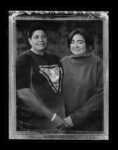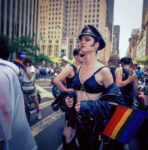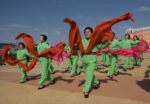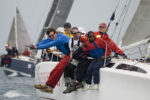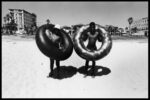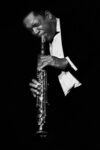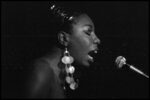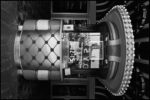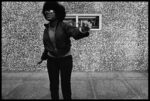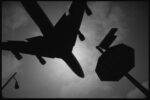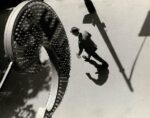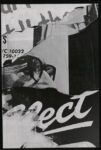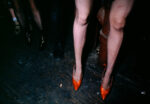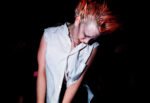Karen I. Hirsch
Karen I. Hirsch
karen@karenihirsch.com
www.karenihirsch.com
www.karenihirsch.com/visualart
Karen I. Hirsch is an international award-winning photographer and digital artist based in Chicago, Illinois. Her work spans editorial, commercial, and fine art photography, with a distinctive style that captures the essence of her subjects through color, composition, and timing.
Hirsch’s photographs have been featured in prestigious publications such as Communication Arts, Graphis, Architectural Digest, Forbes, and the Chicago Tribune. Her images are part of corporate and private collections and have been exhibited in galleries across the globe – including New York, Chicago, Los Angeles, Barcelona, Berlin and Basel.
Among Hirsch’s numerous awards was the grand prize in the Chicago Daily News/Kodak competition, best photo in an American Society of Magazine Photographers contest and grants from the Chicago Department of Cultural Affairs and the Illinois Arts Alliance.
Hirsch studied with master photographers Ernst Haas, Jay Maisel and Arnold Newman.
In 2003, the Chicago Department of Cultural Affairs hosted her solo exhibition “My Chicago,” a 25-year retrospective showcasing over 200 images of the city’s people, places, and events. In 2007, she was among ten foreign photographers invited by the Chinese government to document the city of Rizhao.
An active member of the photographic community, Hirsch serves as co-president of the Fort Dearborn-Chicago Photo Forum and is affiliated with the ASMP, the American Photographic Artists and the American Photography Archives Group.
Edward Quinn
Archive representative: Wolfgang Frei
Born in Dublin in 1920, Edward Quinn was a professional musician and served as a flight navigator in the Royal Air Force during World War II. After the war, he eventually made his way to the Côte d’Azur, where he learned photography and captured images of world leaders, glamour girls, as well as figures from the worlds of film, art, music, and literature. His most memorable work included images of a then-unknown Audrey Hepburn, Grace Kelly, and Brigitte Bardot. His keen eye also captured Picasso, T.S. Eliot, Gary Cooper, and many others.
In 1951, Edward Quinn met and photographed Pablo Picasso for the first time. Their friendship lasted until Picasso’s death in 1973. This encounter with Picasso proved to be hugely influential for Quinn and shaped much of his later work. Quinn is the author of several books and films about Picasso.
Starting in the 1960s, Quinn focused his work on artists, including Max Ernst, Alexander Calder, Francis Bacon, Salvador Dalí, Graham Sutherland, and David Hockney. Quinn passed away in 1997.
The Edward Quinn Archive, located in Switzerland, is managed by his nephew Wolfgang Frei. It contains more than 180,000 photos (negatives) from the 1950s through the 1970s.
A curated selection of about 16,000 photos is published on edwardquinn.com.
The most significant part of the archive is the approximately 9,000 photos of Picasso.
About 25,000 pictures have already been digitized.
William James Warren
-

- RFK & Ceasar Chavez in Delano, CA, USA on the occasion of Chavez’s ending a lengthy fast. A mass is being said from a flatbed truck; to the right and behind the camera. 1968 No model releases
-

- Mississippi State Police, Marks, Mississippi, during the Poor People’s Campaign. There was very little that this gentleman liked about me, least of all the relative immunity I enjoyed as a member of the press amongst others of the same trade.
-

- Washington, D.C., Poor People’s Campaign, June, 1968. Photographer Jill Freedman, who wears an SCLC badge. There were a number of us who were called to spend months on the story.
-

- Mrs. Margaret Franklyn through the screen door of her home in Marks, Quitman County, Mississippi, then the poorest county in the USA. 1968
-
WILLAM JAMES WARREN
William James Warren is a documentary photojournalist living in San Diego, CA. He is currently organizing his archive at Briscoe Center, U of Texas, Austin, courtesy of APAG’s introduction.
Visual Philosophy: “Multum in Parvo; I strive to distill the essence of what I see, feel and imagine into compelling visual form, with the greatest possible depth and economy. I seek images with a narrative, which invite curiosity and reward contemplation.”
Born in 1942, raised in Westchester, CA, he was the only son of Depression survivors — his senior aircraft engineer/inventor father and his office manager/wordsmith mother. Their tough love included debiting Warren’s allowance $0.10 for every use of the term: “You-Know”. Despite funds being tight, they provided him with his first 35mm camera, a modest Petrie range finder. It was the first of some dozens of cameras to follow over a sixty-year career that became his raison d’être.
Self-educated in photography, Warren’s career officially began in 1965, as a Combat Photographer/Reporter for the PIO (Public Info Office) of the 101st Airborne Division, U. S. Army, in Vietnam, where he was a natural for the job, owning both a camera, a dictionary and a white belt in journalism. Dirck Halstead, head of UPI, Saigon, liked Warren’s meager portfolio and invited him to remain in Vietnam as a stringer, after his discharge in 1966; an honor he declined, having had enough of a war he judged un-winnable, insane and hazardous to his health.
“I left my M-16 rifle, 200 rounds of ammo, hand grenades, behind in Vietnam, but kept my Nikon-F, per the example of Gordon Parks’ ‘A Choice of Weapons’. I had been raised on a diet of John Steinbeck and Life Magazines. My (virtual) tutors were W. Eugene Smith, Dorothea Lange, et al of the Farm Security Administration school. I channeled them all subconsciously in obedience to a spiritual calling to witness and record my impressions of the history unfolding around me.
“Forget Depth of Field, seek Depth of Feeling” became my mantra and theme song, with the words ‘Truth to Power’ worked in.”
On his return to California, he began freelancing, driven to record the Anti-War, Counterculture & Civil Rights Movements of the ’60s and ‘70s. His plan to return to college was derailed as assignments consumed his energies.
Warren’s broad interests and empathetic eye led him to his many subjects, and clients, as diverse as: ACLU, L.A. Philharmonic Orchestra, Suicide Prevention Center, Constitutional Rights Foundation, Charles Drew Medical School, Psychology Today, Office of Economic Opportunity (OEO), Center for Democratic Institutions, Santa Barbara, CA. His exposure through the L.A. Free Press and UPI, attracted the New York press. His early editorial clients include: United Press International, Los Angeles Free Press, L. A. Times – West Magazine, Associated Press, Newsweek, Time, Life, LOOK, Psychology Today, Canadian Broadcasting Corporation, et al.
Influenced by the cinéma vérité work of Frederick Wiseman, Warren used a cover story in Newsweek on Abortion to sell his first half-hour documentary to CBC. The film, aired on CBC Weekend, influenced legislation in Canada & US, leading to Roe v. Wade. That film’s success led to ‘Thank You Jesus’, a half hour vérité documentary on Pentecostal ‘Jesus Freaks’, who at the time were busy recruiting lost youths on Hollywood Blvd and baptizing them in the surf of Venice Beach, subjecting them to rape and other abuses.
After LOOK’s final demise in 1979, Warren began shooting for organizations and corporations: NASA – Jet Propulsion Laboratory, Lockheed, Northrop, Fluor, National Semiconductor, Gladstone (Medical) Institutes, Agrigenetics, NYSE, NJ&NY Port Authority, and many others.
Introductions to legendary graphic designers Robert Miles Runyan, James Cross, John Grissom Divers and Saul Bass, opened the gold mine of the Corporate Annual Report. Assignments paid magnitudes more than editorial and yielded round-the world tours in the bargain. For Warren, the the line between work and play ceased to exist.
Surfing this wave, Warren met Charles O’Rear, renowned National Geographic photographer, who invited him to join the Westlight Stock Agency, where Warren quickly rose to the upper 10% of earners. Craig Aurness, Westlight’s owner, invented the stock photo catalog, catapulting the stock business into a career in and of itself. Thousands of licenses have been issued for reproduction of Warren’s work, globally, in all fields of media and publishing.
Awards include: American Institute of Graphic Arts, Eastman Kodak, Fuji, Communication Arts, Graphis, Art Direction, Graphic Design, USA, Financial World, Print Magazines; New York, Western and Los Angeles Art Director’s Clubs.
Warren’s work is included in the permanent collections of the J. Paul Getty Museum and the Museum of Photographic Arts, San Diego, CA. One of his portraits of Jill Freedman graces the cover of the APAG Handbook, selections of his work are currently available at Alamy.com.
Web Portfolio: williamjameswarren.com
Contact: will@williamjameswarren.com
David Lubarsky
Ave Pildas
Ave Pildas
Whether photographing jazz greats in smoke-filled clubs, the gritty theatrics on infamous
Hollywood Boulevard, or the spontaneous interactions between people and animals at
locations worldwide – Ave Pildas offers a rich and diverse survey of contemporary life.
Ave began his arts education as an architecture student, designing department stores, and
government and medical buildings. Before long, this path felt too conservative and
constricting, so he changed majors to design. Creating products, packaging, and graphics
provided enough diversity to seem like “complete freedom” at the time. Concurrently, Ave
was designing exhibits, displays, graphics, and publications for the Cincinnati Public
Library. After studying at the University of Cincinnati and graduating from the Cincinnati Art
Academy in 1962, Ave headed east to Pittsburgh, where he worked designing collateral for
U.S. Steel, Alcoa, Pittsburgh Plate Glass, Koppers, and Westinghouse. At Westinghouse, he
met renowned graphic designer Paul Rand.
With encouragement from Rand and well-known typographer Noel Martin, Ave traveled to
Switzerland and enrolled at the Kunstgewerbeschule, studying typography and graphic
design during the Cold War. As a student, he visited every country in Europe and parts of
North Africa, often by car. It was at this time that Ave set the lofty goal of “raising the visual
conscience” of the world, and, at the conclusion of his studies, accepted a position as
assistant professor at Philadelphia College of Art, now the University of the Arts in
Philadelphia. Since then, he has taught at Layton School of Art, Leicester Polytechnic in
Britain, Cal Arts, Art Center College of Design, UCLA, USC, as well as Otis College of Art
and Design, where he served as Chair of the Communication Arts Department. He is
currently Professor Emeritus at Otis.
Ave has been taking photos that combine his observational ability with his prowess as a
designer for over fifty years. His photographs have appeared in national and international
publications. Many of his images of Hollywood Boulevard from the 1970s are represented
in the permanent collections of the Los Angeles County Museum of Art and the New York
Public Library, and appear in Ave’s latest Monograph, Star Struck (2022, Deadbeat Club
Press). Three other books of his photographs have been published previously: Art Deco LA
(1978, Harper & Row), Movie Palaces: Los Angeles (2000, Clarkson Potter), and Bijou (2016,
Nazraeli Press).
Ernest Stone
ERNEST STONE | 1918-1992
erneststone.com
Contact Melissa Berman at erneststoneart@gmail.com
Ernest Stone was a very public figure in New York City in the ‘60s, ‘70s and ‘80s —
a top 40 disc jockey with WMCA, broadcast personality on WNET Channel 13, actor,
and founding member of Off Broadway’s respected repertory company New Stages.
But privately, he led a second creative life, as a photographer. Walking miles each day
through the neighborhoods of NYC, he was an intrepid chronicler of a city in a time of
transition and upheaval, on the razor’s edge between the classical and the modern.
For two decades, Stone, who was born and raised in Flatbush Brooklyn to immigrant
parents, explored his adult home of Manhattan capturing the landscape, politics,
counter-culture and people. He also experimented in abstracts, still life, and a
personal study of the shifts in a post-war Europe.
Except for a one-man show at the Rina Gallery in 1974 (entitled “New York A to Z”), Stone
eschewed the business side of fine art, preferring to keep his work almost entirely private.
Just before his death in 1992, he told his niece he was “ready for my work to be out in
the world.” Today, she is working with Augusta Edwards Fine Art to present his story and
his extensive archive, including a series of collages that supplement his photography in
intriguing ways.
Erwan Illian
Erwan Illian was an amateur photographer in the 70’s.
As he traveled to Paris, then later to the American South, landing finally in New York City in 1978, Photography was a way to discover the new world around him. Even though he never made a living as a photographer, he continued to pursue it “on the side” until he eventually stopped in 1982. Later he moved to Northern California and became a cabinet-maker.
He is now looking for ways to preserve and present some of that work, while working on a book around photos taken at CBGB’s circa 1979/1982.
Carl Corey
Carl Corey is a Guggenheim Fellow in Photography and the recipient of over 100 awards from the photography and publishing communities including National INDIE Book Publishers Best Photography Book, The Crystal Book Award, Midwest Publishers Gold Book Award, New York Art Directors Club, Communication Arts, Print Annual and USA National Best Book Awards. Carl’s work has been featured in many of photography’s most prestigious periodicals, including Camera Work Bicentennial Edition, Communication Arts, Columbia Journalism Review and Visual Communication Quarterly. Carl’s work is in many art collections and museums.
Corey’s photographs have been the subject of five monographs including: Rancher (Bunker Hill / GalleryPrint, 2007), The Tavern League: A Portrait of the Wisconsin Tavern ( The Wisconsin Historical Society Press, 2011), For Love and Money: A Portrait of the Family Business (WHS Press, 2014), The Strand ~ A Cultural Topography of the American Great Lakes (Cottage Industry Arts 2021) and Pants On Fire (Cottage Industry Arts 2024). He is a featured photographer in Contemporary Photography in New York City, edited by Marla Hamburg Kennedy (Rizzoli, 2011).
Saïd Nuseibeh
-

- “Where Heaven and Earth Meet” Jerusalem/alQuds, 2006. Nightime views of the Qubbat al-Sakhra-Dome of the Rock emanating rays of light.
-

- Sunlight streaming through the 14th-c grilles, or lunettes onto the floor. Masjid Jama3a (Friday Mosque or Congregational Mosque), Isfahan, Iran.
-

- From the Portfolio “Chthonic” consisting of a series of studies under the plaster cross vaults surrounding the courtyard of the Umayyad Mosque in Aleppo, Syria.
photo@studiosaid.com
studiosaid.com
Awarded a Thomas J. Watson Fellowship in 1981 for “a year of independent study and travel abroad,” Saïd lived with the pastoral Huweitat bedu in Arabia. He sought to replicate the sojourns of al-Muttanabbi, a 10th century poet from Iraq who celebrated a purity of Arabic language that thrived far from urban centers. The experience transformed his creative centers from a focus on verbal poetry and onto that of the visual language and poetry. Saïd’s subsequent “Desert Portfolio” was first exhibited in 1984 at Vision Gallery, San Francisco and comprised the first solo exhibit of photography at the Jordan National Museum of Fine Art, Amman.
A practicing architectural photographer, Saïd was commissioned by Harvard emeritus professor Oleg Grabar and the Palestine Welfare Association (Geneva) in 1992 to document the 7th-century Umayyad mosaics in the Muslim shrine Dome of the Rock-Qubbat al-Sakhra, Jerusalem-alQuds. Two volumes resulted, “The Dome of the Rock” and “The Shape of the Holy” published by Rizzoli and Princeton University Press respectively in 1996.
Awarded a Fulbright Senior Scholar Grant in 2005, Said engaged the surviving Umayyad aesthetic legacy in Bilad al-Sham (Palestine, Israel, Jordan, Lebanon, and Syria). With that archive and his visions of geometry and inter-connectedness, he works to this day.
Saïd Nuseibeh was raised in San Francisco, California and Chattanooga, Tennessee. He attended Reed College (BA in English Literature, 1980) in Portland, Oregon and Bir Zeit University, Bir Zeit, Palestine.

